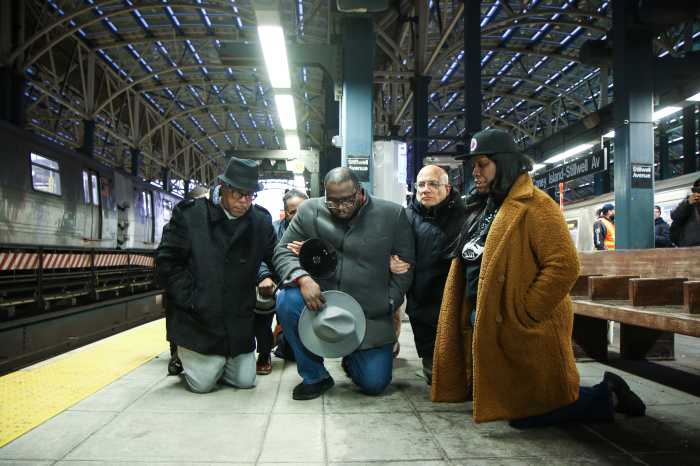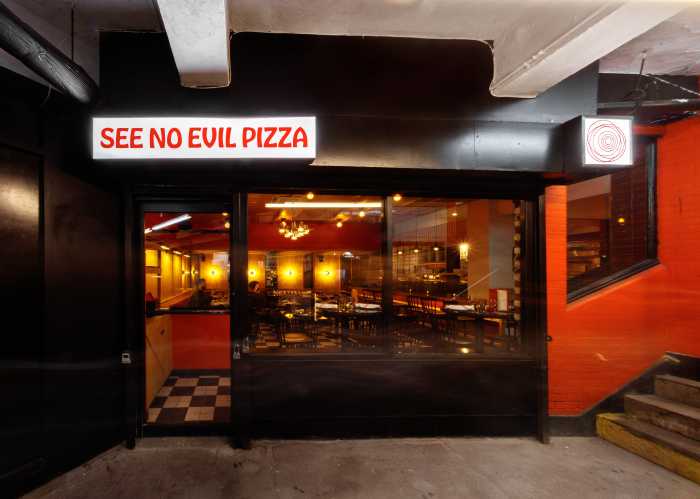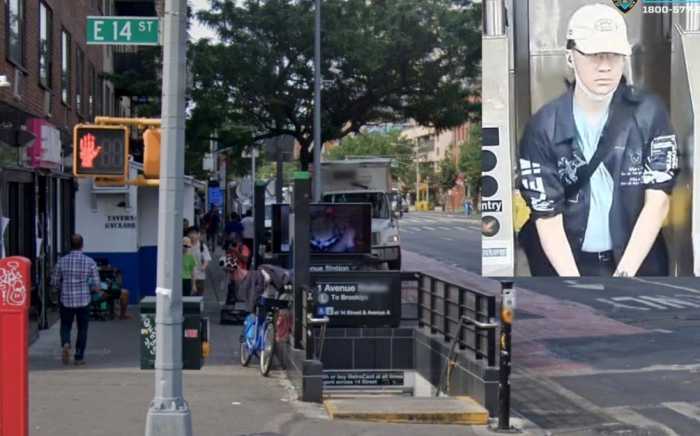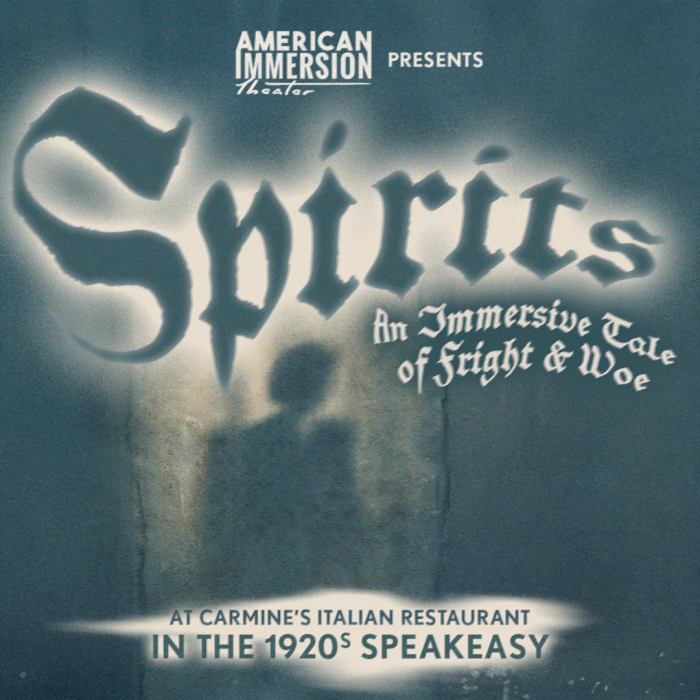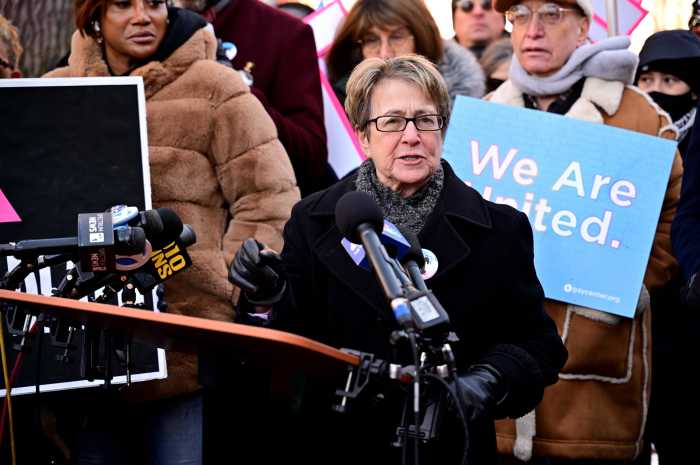The MTA says residents in one Brooklyn neighborhood need not worry about donning masks while crews strip toxic lead paint from the elevated tracks at Myrtle Avenue in Bushwick. But some commuters through the century-old structure aren’t convinced.
The agency insists the work, which involves blasting away layers of paint more than 100 years old and recoating the steel structure, is being done inside airtight containment tents, with monitoring at “dozens of different points” around the site. Officials told amNewYork the tests so far show no cause for concern.
“Like most paint formulas, there will be an odor that is temporary and not harmful,” an agency spokesperson said. “The MTA is following every national guideline that’s recommended for safely carrying out this work, including required enclosures to contain debris.”
Locals aren’t so sure. On TikTok, one community organizer has been urging residents to take precautions and handing out free masks through Concejo De Los Pueblos Originarios, a nonprofit located near the station.
Other users have urged neighbors to mask up, posting videos of dust particles floating on the platform.
Brooklyn residents wonder if it’s safe to breathe
Another resident turned to Reddit two months ago for clarity on the works, which began in February, writing: “There are signs on Broadway saying they are removing lead, and it is a danger. The sound is unbearable. Are we all breathing in lead as they sandblast it off the trestles?”
Replying commenters noted that residents have pushed for years to address the hazardous paint, and the sandblasting is a necessary evil, while others complained that the project has brought intense noise and disruption.
On Wednesday, another resident took to the social media forum to report seeing “dust particles just floating in the air during the morning rush hour.”
“The MTA is removing lead paint from the JMZ line (which is good!), but the way they are doing it is so unsafe for those who ride the train,” they posted.
“Let them rip the Band-Aid off now. Lead paint chips were flaking off the tracks for decades, getting on food and produce of businesses under the tracks, getting pulverized by cars on the streets, and becoming inhalable dust,” another user responded.
The rehabilitation work stretches beyond Myrtle Avenue. A notice from Brooklyn Community Board 4 earlier this year said “M line rehabilitation” began in February, covering six stations from Myrtle Avenue to Fresh Pond Road. Similar blasting and repainting have been ongoing on the J line, where crews wrapped the elevated tracks at Chauncey Street in protective coverings in 2024 before moving the project down Broadway.
In April, amNewYork’s sister publication, Brooklyn Paper, spoke to businesses beneath the tracks in Bushwick about the headaches the ongoing construction has created.
One local resident told the paper that the blasting is so loud it’s triggered noise alerts on their Apple Watch.
The owner of Til Death Café, an open-air coffee shop between Myrtle Avenue and Hart Street, Emily Burns described instances of construction water spraying into her space, and worried the tarps may not be effective in containing lead dust.
She added, “Honestly, it looks like a three-year-old took a bunch of shower curtains and made a fort.”
The dangers of lead
The works stem from a campaign by locals and elected officials after tests of long-falling paint chips from the J and M lines showed lead concentrations of about 63,000 parts per million — more than 12 times the federal hazard limit. Business owners and elected officials pushed the MTA to act, saying children were especially at risk from the dust.
Lead is now recognized as highly dangerous to human health, particularly for young children, who can suffer brain damage and developmental delays from significant exposure. Lead-based paint has been banned for consumer use since 1978, and current commercial paints are limited to no more than 90 parts per million. When the elevated train lines along Myrtle Avenue were constructed in the 1880s, these safety restrictions did not exist. Many of the tracks and stations are among the oldest in the city, originally built and operated by private railroads nearly 20 years before the subway system opened.
The MTA has committed $9 billion to repaint, repair and rehabilitate miles of elevated structures systemwide as part of its 2025–2029 capital plan. The J line is expected to be finished by spring 2026, and the M line by summer of that year.
For now, the work continues, wrapped in white tarps and accompanied by the constant sound of sandblasting, a technique the MTA says it’s saving money and extending the life of its infrastructure.
During a January meeting of the MTA’s Capital Program Committee, the agency’s Deputy Chief Development Officer Mark Roche noted that the change in which it now removes lead paint from transit structures, aims to extend the life of its assets and save hundreds of millions of dollars
Instead of lightly cleaning steel before repainting, crews will now use sandblasting, a method adapted from large bridge projects that can make paint last 30 to 40 years. The agency also revised its contracting strategy, moving from geographic to linear bundling, allowing specialist contractors to work on longer continuous sections of columns and beams. The approach is designed to improve efficiency, reduce recurring maintenance costs, and delay the need for major repairs well into the 2030s and 2040s.
Dr. Michael Chary, an emergency medicine physician and medical toxicologist at Weill Cornell Medicine and NewYork-Presbyterian Hospital, said the risks from lead paint removal depend largely on the method being used.
“The least safe option is dry sandblasting, because you can imagine what happens if you just sandblast lead paint — it just goes into the air,” Chary said. “The more preferred method is wet blasting, where you mix water with the abrasives so that the dust doesn’t just go straight into the air. That, combined with containment, is really the best practice.” The MTA did not confirm which method is being used at the Myrtle Ave. station.
He explained that the danger comes not only from lead, but from dust in general. “The presence of dust is concerning for all sorts of contaminants, not just lead,” he said, adding that people with asthma, COPD, or other airway sensitivities may notice flare-ups during this type of work.
Dr. Chary emphasized that certain groups are particularly vulnerable. Pregnant people and young children face the highest risks, since lead exposure can interfere with fetal development and cause neurological damage in children. People with anemia are also more susceptible, he noted, because their bodies are more likely to absorb lead.
For residents and commuters who remain worried, Dr. Chary recommended simple protective measures: wearing an N95 mask if passing near the site, wiping down surfaces where dust may settle, and removing shoes before entering the home to avoid tracking in particles. Washing hands after being outside can also help reduce incidental exposure.
“If there is concern for ongoing exposure, the best thing to do is talk with your doctor about getting blood testing,” he said. Blood lead levels can confirm whether someone has been exposed at concerning levels.
Chary added that New Yorkers can also call NYC Poison Control directly at 1 (800) 222-1222 or use the online tool, webPOISONCONTROL, to get tailored guidance after a possible exposure.




